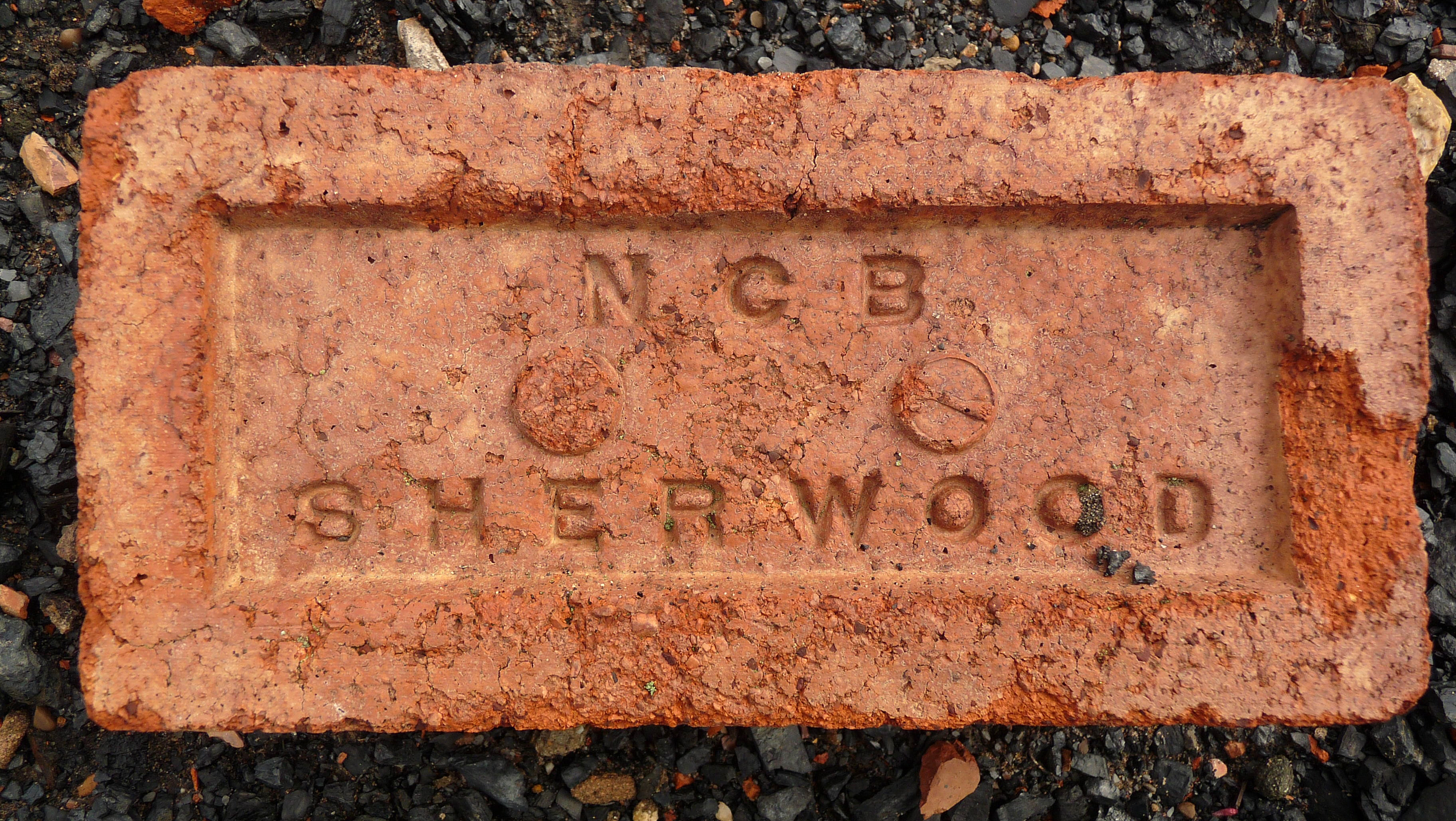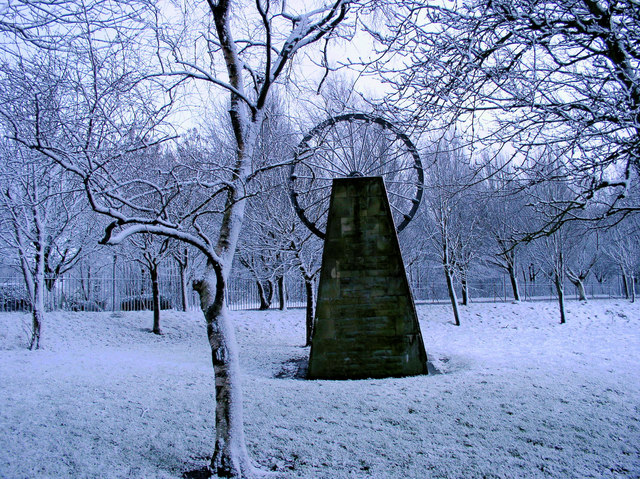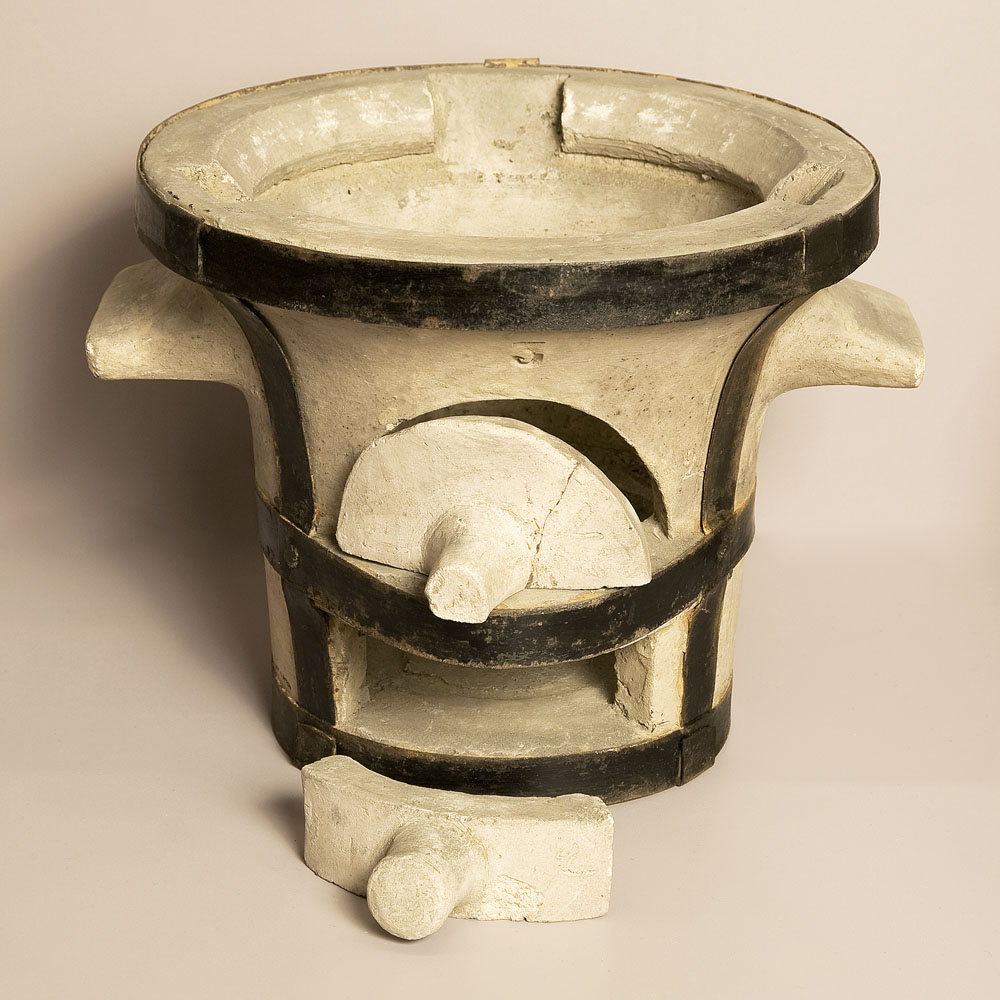|
Towneley Colliery
Towneley Colliery or Towneley Desmesne was a coal mine on the Burnley Coalfield in Burnley, Lancashire, England. Sunk in the late 1860s, it was linked to the Lancashire and Yorkshire Railway's Burnley to Todmorden line which became known as the Copy Pit route and, by tramway, to the Leeds and Liverpool Canal. Towneley Colliery was sunk next to Brooks and Pickup's fireclay works less than a half mile from Towneley railway station which served Towneley Hall. Brooks and Pickup began coal production from the main shaft, the Alice Pit in late February 1869. For 75 years coal was extracted from the Arley, Dandy, King and Yard mines. The colliery had sidings on either side of the Lancashire and Yorkshire Railway's Burnley to Todmorden line, the Copy Pit route. A half-mile long tramway linking it to the Leeds and Liverpool Canal had four tunnels. Boggart Brig Pit beside the A671 Todmorden Road was linked by a tramroad and was also linked underground. The pit was also linked underground ... [...More Info...] [...Related Items...] OR: [Wikipedia] [Google] [Baidu] |
Towneley Colliery Coke Oven 1
Towneley is a surname, and may refer to: People The Towneley family of England * Charles Townley (1 October 1737 – 3 January 1805 , British antiquary * Caroline Theresa Towneley (1838–1873), British heiress * Charles Towneley (MP) (1803–1870), Irish Independent Irish Party and Whig politician * Francis Towneley (1709–1746), English Catholic and Jacobite * Henry Towneley Green (1836–1899), English watercolourist and illustrator * John Towneley (politician) (1806–1878), English Whig politician * John Towneley (translator) (1697–1782), English supporter of the Jacobite Rising of 1745 * Montagu Towneley-Bertie, 13th Earl of Lindsey (2 November 1887 – 11 September 1963), English peer * Richard de Towneley (MP) (c. 1313 – 16 April 1381), English landowner and politician * Richard Towneley (1629–1707), English mathematician, natural philosopher and astronomer * Simon Towneley (1921–2022), British author Barons O'Hagan * Baron O'Hagan (the title) * Thomas O'Hag ... [...More Info...] [...Related Items...] OR: [Wikipedia] [Google] [Baidu] |
Towneley Hall
Towneley Park is owned and managed by Burnley Borough Council and is the largest and most popular park in Burnley, Lancashire, England. The main entrance to the park is within a mile of the town centre and the park extends to the south east, covering an area of some . At the southern end of the park is Towneley Hall, Burnley's art gallery and museum. To the north are golf courses and playing fields and to the south 24 acres of broadleaf woodland. On the southern boundary is a working farm called Towneley Farm with pastures and plantations extending eastwards into Cliviger. History The hall was the home of the Towneley family from around 1200. The family once owned extensive estates in and around Lancashire and the West Riding of Yorkshire. The hall not only contains the 15th-century Whalley Abbey vestments, but also has its own chapel – with a finely carved altarpiece made in Antwerp around 1525. The male line of the family died out in 1878 and in 1901 one of the daughters ... [...More Info...] [...Related Items...] OR: [Wikipedia] [Google] [Baidu] |
Underground Mines In England
Underground most commonly refers to: * Subterranea (geography), the regions beneath the surface of the Earth Underground may also refer to: Places * The Underground (Boston), a music club in the Allston neighborhood of Boston * The Underground (Stoke concert venue), a club/music venue based in Hanley, Stoke-on-Trent * Underground Atlanta, a shopping and entertainment district in the Five Points neighborhood of downtown Atlanta, Georgia * Buenos Aires Underground, a rapid transit system * London Underground, a rapid transit system Arts, entertainment, and media Films * ''Underground'' (1928 film), a drama by Anthony Asquith * ''Underground'' (1941 film), a war drama by Vincent Sherman * ''Underground'' (1970 film), a war drama starring Robert Goulet * ''Underground'' (1976 film), a documentary about the radical organization the Weathermen * ''Underground'' (1989 film), a film featuring Melora Walters * ''Underground'' (1995 film), a film by Emir Kusturica * ''The Underground'' ... [...More Info...] [...Related Items...] OR: [Wikipedia] [Google] [Baidu] |
Mining In Lancashire
Mining is the extraction of valuable minerals or other geological materials from the Earth, usually from an ore body, lode, vein, seam, reef, or placer deposit. The exploitation of these deposits for raw material is based on the economic viability of investing in the equipment, labor, and energy required to extract, refine and transport the materials found at the mine to manufacturers who can use the material. Ores recovered by mining include metals, coal, oil shale, gemstones, limestone, chalk, dimension stone, rock salt, potash, gravel, and clay. Mining is required to obtain most materials that cannot be grown through agricultural processes, or feasibly created artificially in a laboratory or factory. Mining in a wider sense includes extraction of any non-renewable resource such as petroleum, natural gas, or even water. Modern mining processes involve prospecting for ore bodies, analysis of the profit potential of a proposed mine, extraction of the desired materials ... [...More Info...] [...Related Items...] OR: [Wikipedia] [Google] [Baidu] |
Coal Mines In Lancashire
Coal is a combustible black or brownish-black sedimentary rock, formed as rock strata called coal seams. Coal is mostly carbon with variable amounts of other elements, chiefly hydrogen, sulfur, oxygen, and nitrogen. Coal is formed when dead plant matter decays into peat and is converted into coal by the heat and pressure of deep burial over millions of years. Vast deposits of coal originate in former wetlands called coal forests that covered much of the Earth's tropical land areas during the late Carboniferous ( Pennsylvanian) and Permian times. Many significant coal deposits are younger than this and originate from the Mesozoic and Cenozoic eras. Coal is used primarily as a fuel. While coal has been known and used for thousands of years, its usage was limited until the Industrial Revolution. With the invention of the steam engine, coal consumption increased. In 2020, coal supplied about a quarter of the world's primary energy and over a third of its electricity. Some iron a ... [...More Info...] [...Related Items...] OR: [Wikipedia] [Google] [Baidu] |
National Coal Board
The National Coal Board (NCB) was the statutory corporation created to run the nationalised coal mining industry in the United Kingdom. Set up under the Coal Industry Nationalisation Act 1946, it took over the United Kingdom's collieries on "vesting day", 1 January 1947. In 1987, the NCB was renamed the British Coal Corporation, and its assets were subsequently privatised. Background Collieries were taken under government control during the First and Second World Wars. The Sankey Commission in 1919 gave R. H. Tawney, Sidney Webb and Sir Leo Chiozza Money the opportunity to advocate nationalisation, but it was rejected. Coal reserves were nationalised during the war in 1942 and placed under the control of the Coal Commission, but the mining industry remained in private hands. At the time, many coal companies were small, although some consolidation had taken place in the years before the war. Formation and organisation The NCB was one of a number of public corporations cr ... [...More Info...] [...Related Items...] OR: [Wikipedia] [Google] [Baidu] |
Bank Hall Colliery
Bank Hall Colliery was a coal mine on the Burnley Coalfield in Burnley, Lancashire near the Leeds and Liverpool Canal. Sunk in the late 1860s, it was the town's largest and deepest pit and had a life of more than 100 years. History The Rev. John Hargreaves (1732-1812), had purchased the Bank Hall estate—previously called Bank Top—by 1796. He entered the local coal industry through marriage in 1755 and in 1797 he acquired the lease-holds for most of the mineral rights in the area. After his death, the company adopted the name 'The Executors of John Hargreaves'. His nephew, Colonel John Hargreaves (1775-1834) continued the business until his death. His son had died young, and the property, including Bank Hall and Ormerod Hall in Cliviger, was divided between two daughters. The younger, Charlotte Anne, had married General Sir James Yorke Scarlett, a hero of the Battle of Balaclava, but the couple produced no offspring. The elder, Eleanor Mary, married the Rev. William Thursby an ... [...More Info...] [...Related Items...] OR: [Wikipedia] [Google] [Baidu] |
Ordnance Survey
, nativename_a = , nativename_r = , logo = Ordnance Survey 2015 Logo.svg , logo_width = 240px , logo_caption = , seal = , seal_width = , seal_caption = , picture = , picture_width = , picture_caption = , formed = , preceding1 = , dissolved = , superseding = , jurisdiction = Great BritainThe Ordnance Survey deals only with maps of Great Britain, and, to an extent, the Isle of Man, but not Northern Ireland, which has its own, separate government agency, the Ordnance Survey of Northern Ireland. , headquarters = Southampton, England, UK , region_code = GB , coordinates = , employees = 1,244 , budget = , minister1_name = , minister1_pfo = , chief1_name = Steve Blair , chief1_position = CEO , agency_type = , parent_agency = , child1_agency = , keydocument1 = , website = , footnotes = , map = , map_width = , map_caption = Ordnance Survey (OS) is the national mapping agency for Great Britain. The agency's name indicates its original military purpose (se ... [...More Info...] [...Related Items...] OR: [Wikipedia] [Google] [Baidu] |
Towneley Railway Station
Towneley railway station was a station in Lancashire which served Burnley Wood and the nearby Towneley Hall on the eastern edge of Burnley. Opened on 12 November 1849 by the Lancashire and Yorkshire Railway, it was served by local trains on the Todmorden to Burnley line until closure by British Railways London Midland Region on 4 August 1952. The station house survives as a private residence, whilst the signal box remains in use to supervise a busy level crossing A level crossing is an intersection where a railway line crosses a road, Trail, path, or (in rare situations) airport runway, at the same level, as opposed to the railway line crossing over or under using an Overpass#Railway, overpass ... next to the former station site. References * {{Borough of Burnley culture Disused railway stations in Burnley Former Lancashire and Yorkshire Railway stations Railway stations in Great Britain opened in 1849 Railway stations in Great Britain closed in 1952 ... [...More Info...] [...Related Items...] OR: [Wikipedia] [Google] [Baidu] |
Coal Mine
Coal mining is the process of extracting coal from the ground. Coal is valued for its energy content and since the 1880s has been widely used to generate electricity. Steel and cement industries use coal as a fuel for extraction of iron from iron ore and for cement production. In the United Kingdom and South Africa, a coal mine and its structures are a colliery, a coal mine is called a 'pit', and the above-ground structures are a 'pit head'. In Australia, "colliery" generally refers to an underground coal mine. Coal mining has had many developments in recent years, from the early days of men tunneling, digging and manually extracting the coal on carts to large open-cut and longwall mines. Mining at this scale requires the use of draglines, trucks, conveyors, hydraulic jacks and shearers. The coal mining industry has a long history of significant negative environmental impacts on local ecosystems, health impacts on local communities and workers, and contributes heavily to th ... [...More Info...] [...Related Items...] OR: [Wikipedia] [Google] [Baidu] |
Fireclay
Fire clay is a range of refractory clays used in the manufacture of ceramics, especially fire brick. The United States Environmental Protection Agency defines fire clay very generally as a "mineral aggregate composed of hydrous silicates of aluminium (Al2O3·2SiO2·2H2O) with or without free silica." Properties High-grade fire clays can withstand temperatures of 1,775 °C (3,227 °F), but to be referred to as a "fire clay" the material must withstand a minimum temperature of .Minerals Zone, World Mineral Exchange. Retrieved 2011-6-23. Fire clays range from ''s'' to ''plastic fire clays'', but there are ''semi-flint'' and ''semi-plastic'' fire clays as well. Fire clays consist ... [...More Info...] [...Related Items...] OR: [Wikipedia] [Google] [Baidu] |
Leeds And Liverpool Canal
The Leeds and Liverpool Canal is a canal in Northern England, linking the cities of Leeds and Liverpool. Over a distance of , crossing the Pennines, and including 91 locks on the main line. The Leeds and Liverpool Canal has several small branches, and in the early 21st century a new link was constructed into the Liverpool docks system. History Background In the mid-18th century the growing towns of Yorkshire, including Leeds, Wakefield and Bradford, were trading increasingly. While the Aire and Calder Navigation improved links to the east for Leeds, links to the west were limited. Bradford merchants wanted to increase the supply of limestone to make lime for mortar and agriculture using coal from Bradford's collieries and to transport textiles to the Port of Liverpool. On the west coast, traders in the busy port of Liverpool wanted a cheap supply of coal for their shipping and manufacturing businesses and to tap the output from the industrial regions of Lancashire. Inspired by ... [...More Info...] [...Related Items...] OR: [Wikipedia] [Google] [Baidu] |






